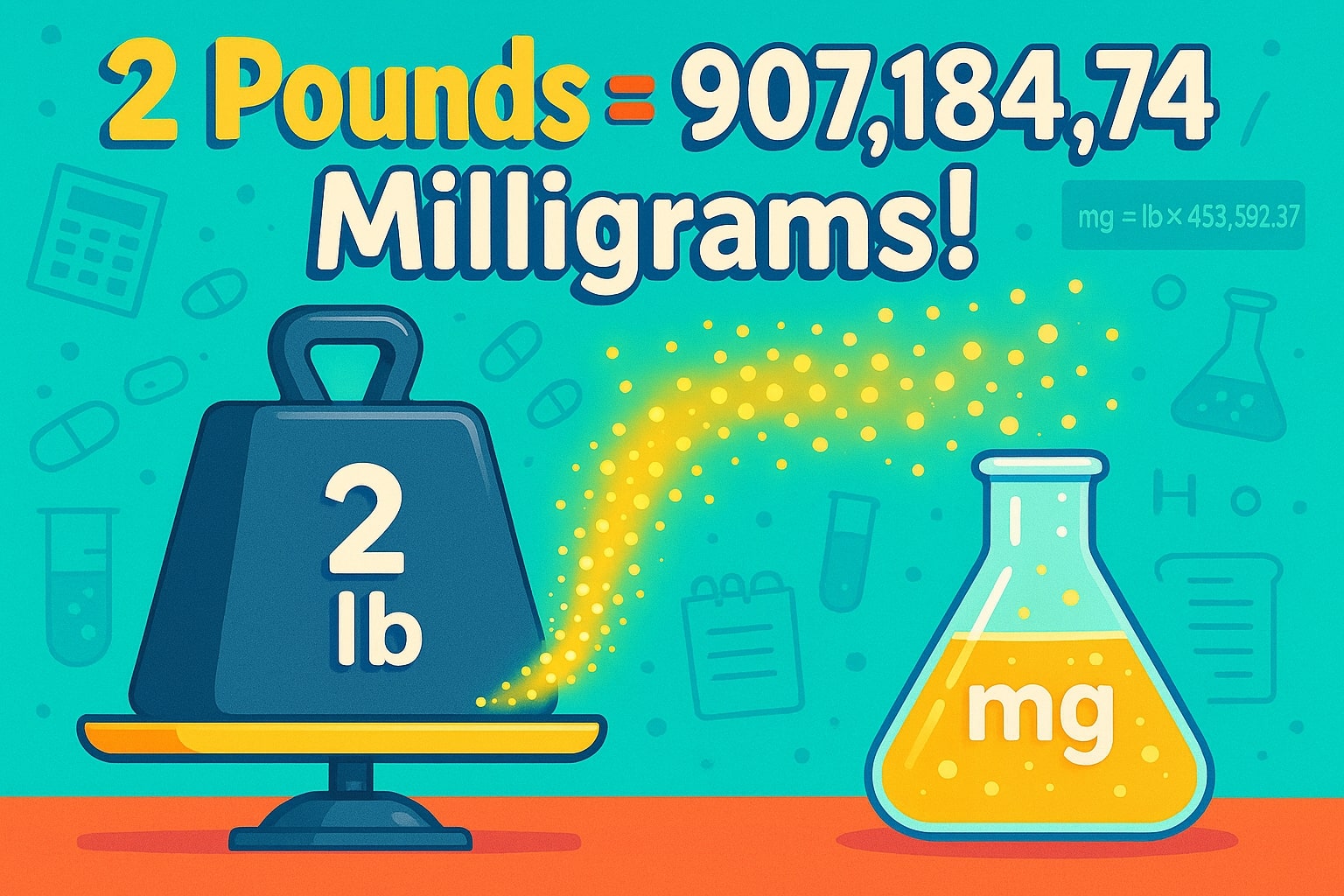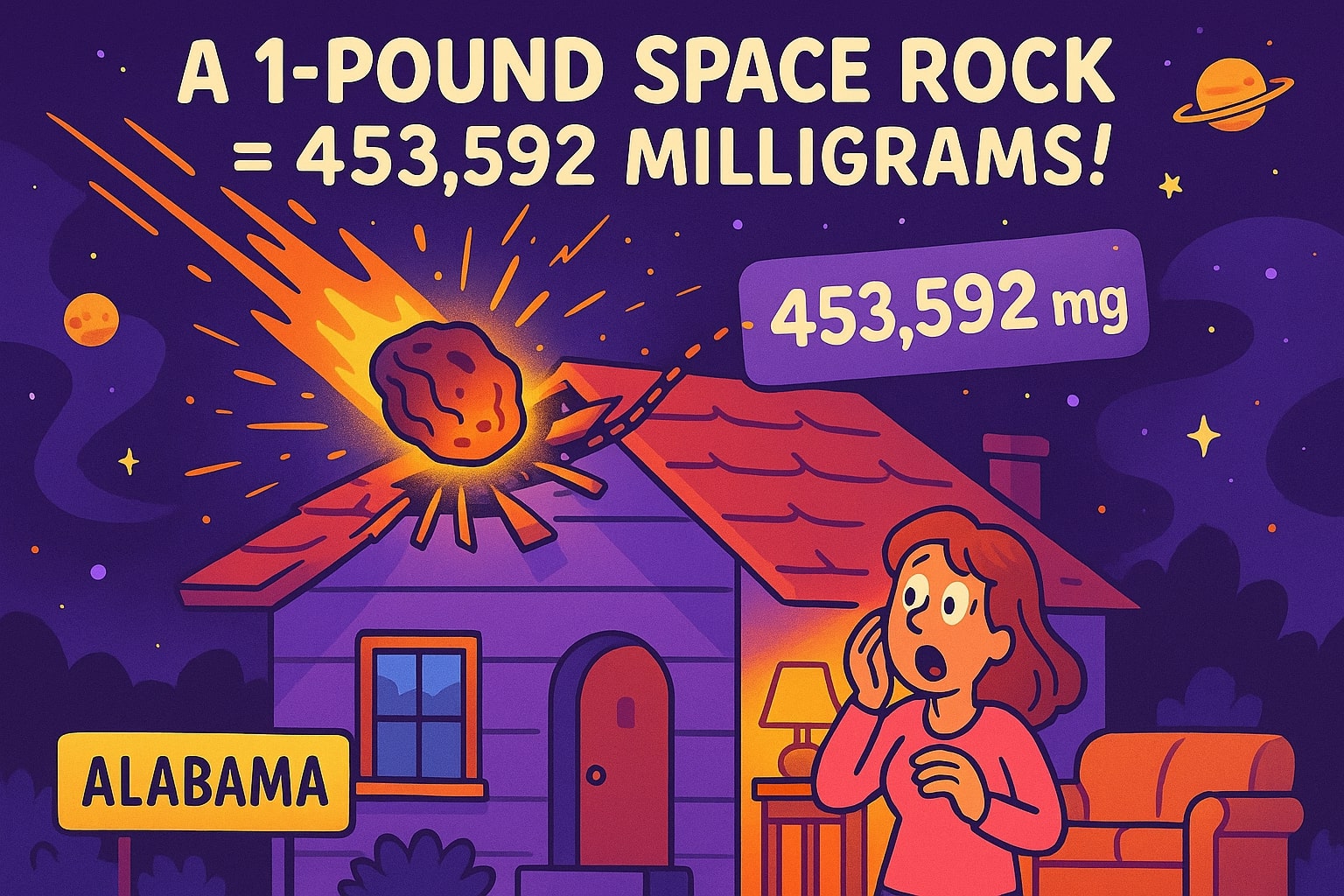Now that you know how to convert lb to mg, you can tackle precise measurements in cooking, healthcare, research, and beyond. For more versatile unit-switching—across weights, lengths, volumes, and more—explore our powerful Conversion tool and make every calculation a breeze!
How to Convert Pounds to Milligrams?
The lb to mg conversion is essential in medicine, science, and industry, where small weight measurements must be accurate. Since pounds (lb) and milligrams (mg) belong to different measurement systems, knowing how to convert between them is crucial. For lightning-fast, accurate results—whether you’re compounding medications or analyzing lab samples—try our intuitive Weight Converter and get your answer instantly!

Pounds vs. Milligrams
-
1 Pound (lb) = 453,592.37 Milligrams (mg)
-
Pounds (lb) are part of the imperial system, commonly used in the United States and the UK for measuring body weight, food, and trade.
-
Milligrams (mg) belong to the metric system, mainly used in scientific, pharmaceutical, and medical fields where precise weight measurement is required.
To convert pounds to milligrams, use this formula:
Milligrams (mg) = Pounds (lb) × 453,592.37
Example: Convert 2 lb to milligrams:
2 × 453,592.37 = 907,184.74 mg
Do You Know?
-
A single aspirin tablet often contains 325 mg of the active ingredient. This means 1 lb of aspirin powder could make over 1,395 tablets.
-
A honeybee weighs about 90 mg, meaning one pound is equal to over 5,000 bees!
-
One pound of flour equals about 3.6 cups, a useful fact for baking conversions.
-
The average human brain weighs about 3 lbs (1.36 million mg).
-
Gold leaf, one of the thinnest materials on Earth, can be just 0.1 mg per sheet—so one pound of gold leaf would contain over 4.5 million sheets!
The 1-Pound Meteorite That Fell From Space
In 1992, a one-pound meteorite crashed through a woman’s house in Alabama, USA. This rock, which weighed about 453,592 mg, had traveled from space before colliding with Earth. Known as the Sylacauga Meteorite, it is one of the few space rocks to have actually hit a person (though the woman only suffered minor injuries).
This meteorite remains a fascinating piece of history, demonstrating how weight measurements—like lb to mg—can apply even to objects from outer space!


